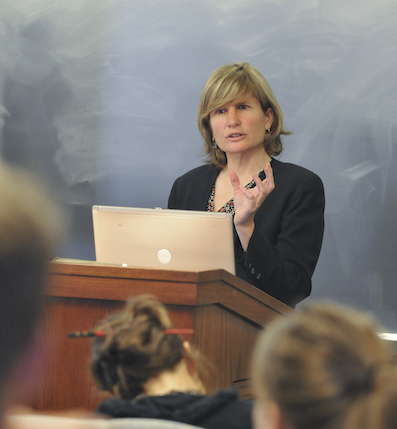The Newseum Institute’s First Amendment expert, Gene Policinski, originally published this commentary on April 5, 2018, on the Newseum blog, and has given First Amendment Watch permission to reprint.
Sinclair Broadcasting’s recent promotional message on the state of today’s news — delivered to its TV audiences nationwide — is as protected by the First Amendment as it was an oafish attempt to hide corporate messaging under the veneer of local news reporting.
In other words, it was commentary from a conservative company that has a First Amendment right to express its views, but it was also a shoddy tactic that undermined the very thing Sinclair’s leadership claimed to support: good journalism.
Deadspin — an online sports news site — put together a now widely-shared video of news anchors from 45 Sinclair-owned American stations, all reading in synchrony from the same script. The video’s echo-chamber effect laid bare what many have described as an “Orwellian” attempt to deliver a persuasive message using trusted voices in local journalism.
The mash-up of TV anchors, delivering the script with varying degrees of sincerity, prompted dire warnings about media consolidation and ulterior political motives from left-leaning cable news commentators, and was poked fun at by late-night entertainment hosts.
President Trump tweeted a defense of Sinclair, using the controversy to take yet another swipe at the same mainstream news outlets he frequently attacks: “So funny to watch Fake News Networks, among the most dishonest groups of people I have ever dealt with, criticize Sinclair Broadcasting for being biased.”
Trump has it wrong — critics took aim at the method, not the message.
Let’s parse the actual effort. As it has in the past on various subjects, Sinclair’s top management — now in charge of TV stations in 81 markets across the nation — sent to its stations a one-minute script warning viewers of “fake news” and impugning the “one-sided news stories plaguing our country,” and the standards and goals of unnamed media outlets intent on pushing “their own personal bias and agenda to control ‘exactly what people think.’”
Anchors close the monologue by looking directly into the camera while delivering a solemn warning that “this is extremely dangerous to our democracy.” Whew. As an old PR adage goes, “Nothing sells like sincerity — even if you have to fake it.”
Yes, so-called “fake news” — a term so often misused and fraught with political baggage that my Newseum Education colleagues prefer “false news” — is a problem, whether it rests in sloppy reporting, expressed or hidden bias, or outright falsehoods.
But why combat the problem with promotional messages designed to appear locally generated when they are not? Why require local news anchors — who, surveys tell us, are more trusted than others in today’s journalism world — to read a PR script with no indication to viewers that’s all they are doing?
For its part, Sinclair has not been bashful about its tactics or purpose. In a memo obtained by The Washington Post, a top executive at the company said criticism of the prepared statements comes from those “upset about our well-researched journalistic initiative focused on fair and objective reporting.”
Scott Livingston, senior VP for news at Sinclair, sent an email to The Baltimore Sun that said “The stories we are referencing in this promo are the unsubstantiated ones (i.e. fake/false) like ‘Pope Endorses Trump,’ which move quickly across social media and result in an ill-informed public … that’s the goal of these announcements: to reiterate our commitment to reporting facts in a pursuit of truth.”
So why not be truthful about the source of the promotional words? Sinclair’s stations are concentrated in cities and states where the majority voted for Trump in the 2016 election – and where audiences are likely to be particularly receptive of any message that questions the veracity of the news media.
Just label the segments as “commentary” and use someone other than a news anchor to deliver the message. Problem solved.
Some of those pushing back at Sinclair’s critics have argued that newspapers have editorial pages where such a message easily would pass ethical muster, whether locally written or “canned” content produced far from the home turf.
Yes, newspapers have editorial pages: sections clearly identified as opinion, and where most publications reserve one well-known spot to deliver their own views.
Next time, Sinclair execs, do yourself and your massive national audience a favor – and fight “fake news” at the same time – by just being transparent about where your message is coming from.
Gene Policinski is president and chief operating officer of the Newseum Institute. He can be reached at gpolicinski@newseum.org, or follow him on Twitter at @genefac.
Tags




